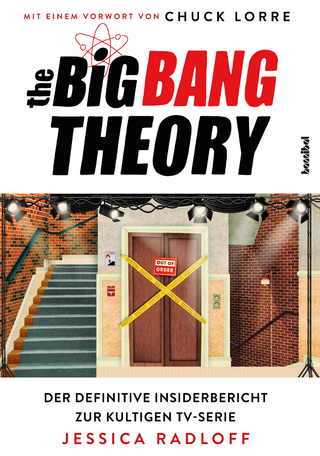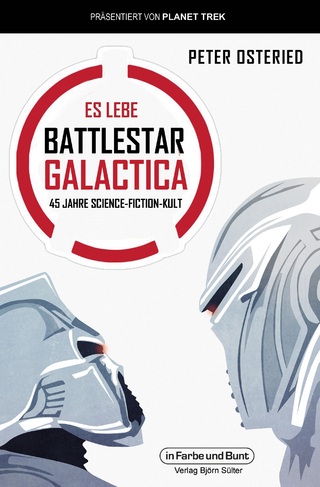
Vampirism in Gothic film parody: From Tod Browning¿s ¿Dracula¿ to Mel Brooks¿ ¿Dracula: Dead and Loving It¿
Bachelor + Master Publishing (Verlag)
978-3-95993-077-2 (ISBN)
The contrasting juxtaposition of the two films serves to provide the parodic constructions of vampirism. By using the six methods of parody by Dan Harris - reiteration, inversion, misdirection, literalizitation, extraneous inclusion and exaggeration - the parodic constructions will be examined. This works aims to find answers to the question what is left of the old-fashioned motifs of vampirism.
Text Sample:
Chapter: 3.1.3 COMPARISON: SIMILARITIES AND DIFFERENCES
Tod Browning's Dracula and Mel Brooks' Dracula: Dead and Loving It conspicuously show clear parallels plot-wise. Insofar, going back to both Grellmann's (630) and Korkut's (14) definition of parody, Brooks' Gothic film parody intentionally imitates Browning's Gothic film by, if you will, conserving the formal elements. In this case, however, the initial translation of the Greek word parody as beside-or-against song (Verweyen and Witting 4ff.; Rose, "Parodie" 5; Chambers 3) applies insofar as, on the one hand, the plot is mirrored, but humorously intended, thus unfolding as "beside song", and, on the other hand, includes, scenes such as the ballroom scene (see Appendix fig. 60) or the passing away and the bloody staking of Lucy Westenra (see Appendix fig. 82), which are not displayed in Browning's plot, hence appear as "against song".
The latter scene, however, proofs that Brooks' Gothic film parody is "structurally quite true to the familiar story" (Joslin 133) - Stoker depicts Lucy's staking, here taken not by Jonathan, but by Arthur, as follows: "[...] driving deeper and deeper the mercy-bearing stake, whilst the blood from the pierced heart welled and spurted up around it." (Stoker 201). Insofar, the "beside song" elements in Brooks's Gothic film parody unfold within an intermedial connection to literature. Lyndon W. Joslin goes even so far to claim that Dracula: Dead and Loving It is "more faithful to the novel than the 1931 version it spoofs" (132). With regard to the plot, this is even a matter of fact, so that between Gothic film parody and novel, one encounters a dominant use of "beside song" elements than between Gothic film parody and Gothic film. According to Dan Harries' parodic methods, therefore, on the level of syntax, Brook's and Stoker's narrative unfolding contains several reiterations such as the ship's name, the Demeter; the use of garlic; the character names; the passing away and the staking of Lucy.
Browning's syntax, in contrast, transforms names such as Westenra to Weston; Jonathan to John or Demeter to Vesta. Moreover, garlic is replaced by wolfsbane, and the visual passing away and the staking of Lucy is either extremely shortened or left out. Browning's narrative unfolding, thus, in respect of Kamilla Elliott (24ff.), can be seen as a parody of Stoker's novel as well, but, opposed to Brooks' syntax, without any clear intention for humour. However, Joslin indicates that Browning's "film isn't really an adaptation of Stoker's novel per se, but an adaptation of the stage play by Hamilton Deane and John L. Balderston" (25). Nonetheless, Browning reiterates Stoker's first chapters regarding the doomed trip to Transylvania, but replaces Jonathan Harker with 27
Renfield due to "the need to "explain" Renfield's involvement with the Count" (25). Brooks' Gothic film parody, or spoof, emphasises this very point through humorous imitation by placing incongruities in the visual depictions of the motifs of vampirism. By this means, Renfield is not given, but intrusively sold a crucifix, and the people's fear of vampires results in Renfield going than being driven to the Borgo Pass. The Count greets Renfield in both plots, but comes crashing down the stairs (see Appendix fig. 100) in Brooks' where one accident follows the next one (see Appendix fig. 102, 103, 104). Such misdirections on the level of syntax are, among other factors, responsible for the parodic presentation of the target material. With these means, "Mel Brooks doesn't insult his audience by claiming Bram Stoker wrote a comedy, not a horror story" (Joslin 133). In this regard, there is no surprise about Brooks' inversion of Browning's syntax - he makes Renfield survive the story.
The vampire's slave's participation is, furthermore, more concrete than in Browning's version: Brooks clearly presents the way Renfield becomes the Count's slave; he shows how the bars of Renfield's wi
| Erscheinungsdatum | 17.03.2019 |
|---|---|
| Reihe/Serie | Masterarbeit |
| Sprache | englisch |
| Maße | 155 x 220 mm |
| Gewicht | 160 g |
| Themenwelt | Kunst / Musik / Theater ► Film / TV |
| Schlagworte | Dracula • Dracula: Dead and Loving It • Gothic filmparody • mel brooks • Tod Browning • vampirism |
| ISBN-10 | 3-95993-077-1 / 3959930771 |
| ISBN-13 | 978-3-95993-077-2 / 9783959930772 |
| Zustand | Neuware |
| Haben Sie eine Frage zum Produkt? |
aus dem Bereich


